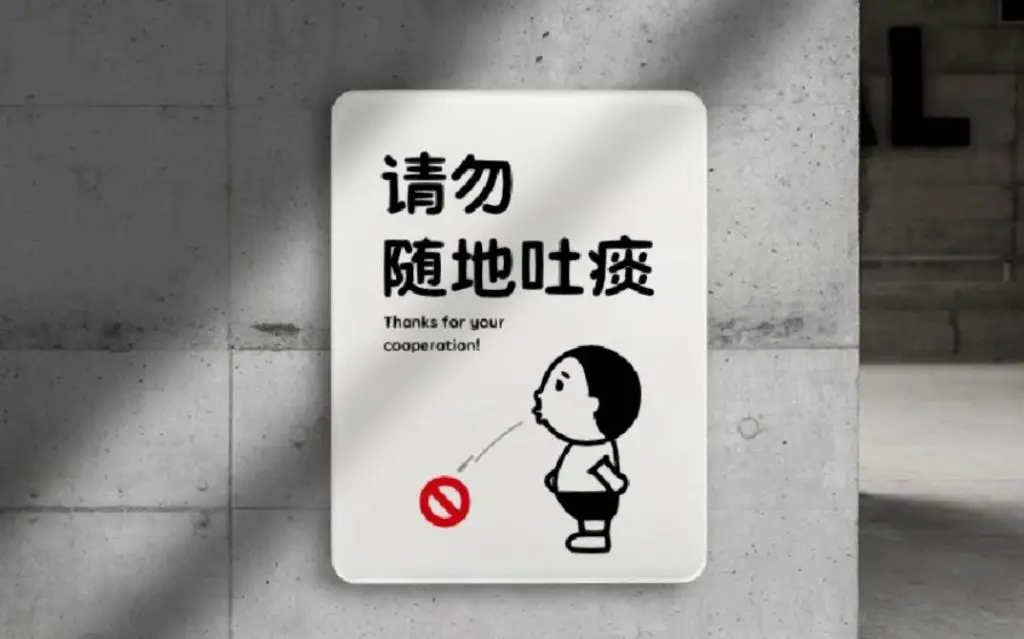Spitting in public is a controversial topic in many cultures around the world, but it’s especially prevalent in China.
The act of spitting is often seen as rude, unsanitary, and even uncivilized by many people.
However, the reasons behind why people in China spit may not be immediately clear to outsiders.
In this article, we will explore the cultural roots and modern attitudes towards spitting in China, providing a comprehensive view of this practice.
Cultural Roots of Spitting in China:
The act of spitting in China can be traced back to ancient cultural practices.
In traditional Chinese medicine, it was believed that spitting was a way to expel bad energy or toxins from the body.
The color and consistency of phlegm can be an early warning sign of respiratory illness.
Additionally, many people believed that spitting was a sign of good health, as it indicated that the body was purging itself of impurities.

Spitting also has roots in Chinese social norms and etiquette.
In the past, it was considered impolite to blow one’s nose in public or use a handkerchief, so spitting was seen as a more socially acceptable way to clear one’s throat or sinuses.
Additionally, in rural areas of China, spitting was a common way to communicate with others from a distance.
Spitting is not the only cultural quirk China holds(MORE Quirks HERE)Modern Attitudes Towards Spitting in China:
While spitting may have been a socially accepted practice in the past, attitudes towards it have shifted in recent years.
With the rise of public health concerns and a growing awareness of hygiene, spitting has come under scrutiny in China.
Many cities have even implemented fines for public spitting in an effort to promote cleaner streets and public spaces.
Despite this, spitting is still a relatively common practice in China, particularly among older generations or those living in rural areas.
Many people still view spitting as a way to maintain good health, or simply as a force of habit.
How Spitting Impacts Chinese Society:

Spitting in public can have a negative impact on both public health and social perceptions of China.
In addition to the potential spread of disease, the act of spitting can be off-putting to foreigners or visitors to China.
This can lead to negative stereotypes and perceptions of China as a whole.
However, it’s important to note that not all Chinese people engage in the practice of spitting, and attitudes towards it are changing.
As China continues to modernize and become more connected to the global community, it’s likely that spitting will become less prevalent over time.
Conclusion:
In conclusion, the act of spitting in China has deep cultural roots and has been a socially accepted practice in the past.
However, modern attitudes towards hygiene and public health have led to a shift in perceptions of spitting in China.
While it may still be a common practice among some groups, it’s important to recognize the potential negative impacts of spitting on public health and social perceptions of China.
By understanding the cultural roots and modern attitudes towards spitting, we can begin to work towards a cleaner, healthier, and more socially acceptable China.
FAQ:
Why do Chinese people spit?
Chinese people spit for a variety of reasons, including:
- To clear their throat or sinuses
- To get rid of phlegm or mucus
- To express frustration or anger
- To demonstrate their contempt for a place or person
What does spitting mean in Asian culture?
Spitting has different meanings in different Asian cultures.
In some cultures, such as China, spitting is a common habit that is seen as a way to relieve congestion or clear the throat.
However, in other cultures, such as Japan and South Korea, spitting is considered impolite and unsanitary.
What cultures spit?
Spitting is a common practice in many cultures around the world, including some parts of Asia, Africa, and the Middle East.
In addition to China, where spitting is a longstanding cultural tradition, spitting is also common in other countries such as India, Vietnam, and Bangladesh.
Outside of Asia, spitting is also a common practice in some African cultures.
In some parts of the Middle East, spitting is considered a normal bodily function and is not considered impolite.
Overall, the practice of spitting is culturally diverse and can vary widely depending on the region and specific cultural context.



Tһiѕ site is so relevant. Finally I’ve found
something ԝhіch helped me. Many thanks!
Hi, jսst wanted to mention, I еnjoүed this article.
It was inspiring. Keep on posting!